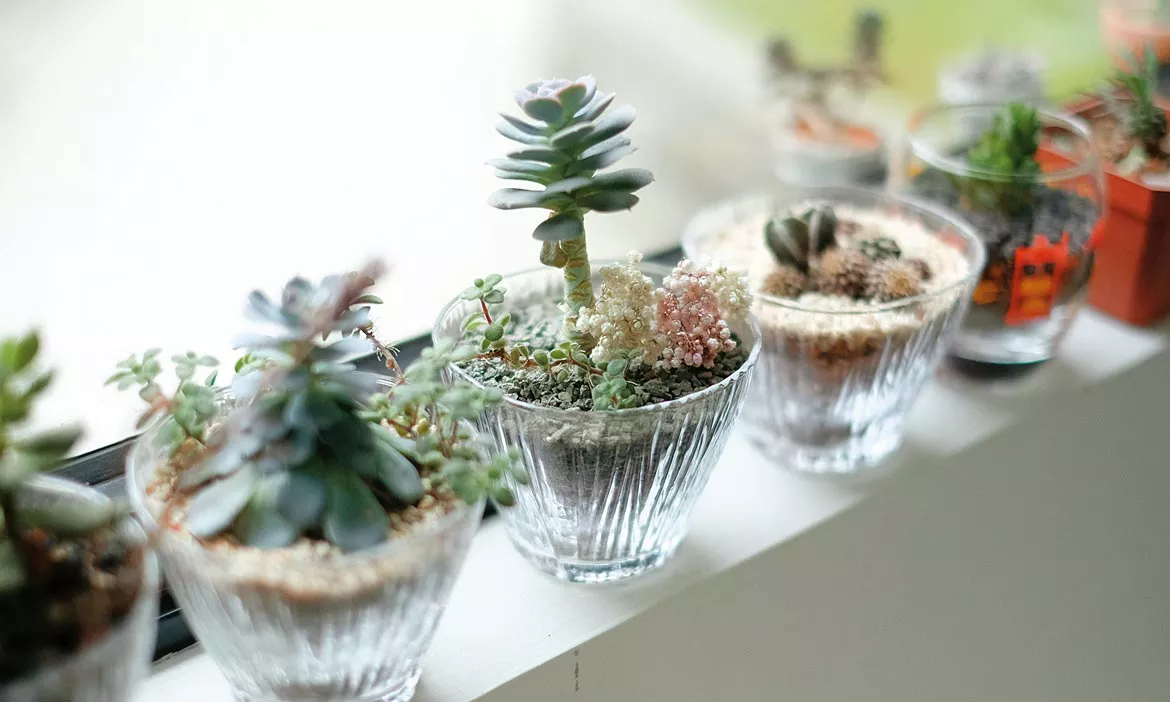Succulents are a popular choice for indoor plants due to their unique appearance, low maintenance requirements, and ability to thrive in various environments. However, providing optimal conditions for these desert-dwelling plants can be challenging when attempting to grow them indoors. In this comprehensive guide, we will explore the key factors necessary for keeping succulents alive and thriving inside your home.
1. Choosing the Right Succulents
Selecting the appropriate succulent species is crucial for successful indoor cultivation. Opt for varieties that are well-suited to low-light conditions and can tolerate indoor temperatures. Some ideal choices include Echeveria, Haworthia, and Gasteria. These succulents have adapted to lower light levels and can withstand fluctuations in temperature commonly found indoors.
2. Providing Adequate Light
One of the most crucial factors in keeping indoor succulents healthy is providing sufficient light. Place your succulents near south-facing windows where they can receive bright, indirect sunlight for at least six hours a day. If natural light is insufficient, supplement it with artificial grow lights specifically designed for plants. Position the lights 6-12 inches above the plants and keep them on for 10-14 hours daily.
3. Ensuring Proper Drainage
Succulents are highly susceptible to root rot caused by overwatering. To prevent this, ensure proper drainage for your potted succulents. Select containers with drainage holes and use a well-draining potting mix formulated explicitly for succulents. Avoid using regular potting soil, as it retains too much moisture which can lead to root issues. Adding a layer of small stones or gravel at the bottom of the pot can also improve drainage.
4. Watering Wisely
Watering succulents correctly is vital to their survival. The key is to strike a balance between underwatering and overwatering. Succulents store water in their leaves and stems, allowing them to withstand periods of drought. Most indoor succulents thrive when watered every 10-14 days, allowing the soil to dry out fully between watering sessions. Be sure to adjust the frequency based on factors such as humidity levels and the size of your succulent.
5. Humidity Control
Indoor environments tend to be drier than the natural habitat of succulents. While they can adapt to lower humidity levels, it is essential to maintain a moderately humid environment for optimal growth. You can increase humidity around your succulents by grouping them together or using a humidifier. Misting is generally ineffective and should be avoided, as it can promote fungal diseases and rot.
6. Temperature Considerations
Succulents prefer warm temperatures during the day, ranging from 70°F to 85°F (21°C to 29°C). However, most varieties can tolerate slightly cooler temperatures at night. Avoid placing succulents near drafty windows or areas with extreme temperature fluctuations, such as heating vents or air conditioning units. Maintain a stable temperature range to prevent stress and ensure healthy growth.
7. Fertilizing Sparingly
While succulents do not require excessive feeding, providing them with nutrients can enhance their overall health and appearance. Use a balanced, water-soluble fertilizer formulated specifically for succulents. Apply the fertilizer at quarter strength once a month during the growing season (spring and summer) and withhold fertilization during the dormant period (fall and winter).
8. Pruning and Maintenance
Regular maintenance, including pruning and cleaning, is necessary to keep indoor succulents thriving. Remove any yellowing or dead leaves to prevent the spread of disease. Trim leggy or elongated growth to encourage a more compact form. Additionally, dust off the leaves regularly using a soft brush or a damp cloth to allow for maximum light absorption.
9. Monitoring for Pests and Diseases
Succulents are generally resistant to pests and diseases; however, they can still be susceptible to common indoor plant issues such as mealybugs, aphids, and fungal infections. Regularly inspect your succulents for any signs of pests or diseases, including sticky residue, webbing, discoloration, or wilting. If detected, promptly treat the affected plants with appropriate organic pest control methods or consult a professional if necessary.
10. Seasonal Adjustments
Remember that succulents have natural growth cycles and may require adjustments based on the changing seasons. During the winter months, when daylight hours are shorter and temperatures drop, reduce watering frequency and avoid fertilization. As spring approaches, gradually increase watering and resume fertilization to support new growth.
By following these guidelines, you can create a favorable environment for your indoor succulents and ensure their long-term health and vitality. Remember that each succulent species has unique care requirements, so it’s essential to research specific varieties for the best results.


